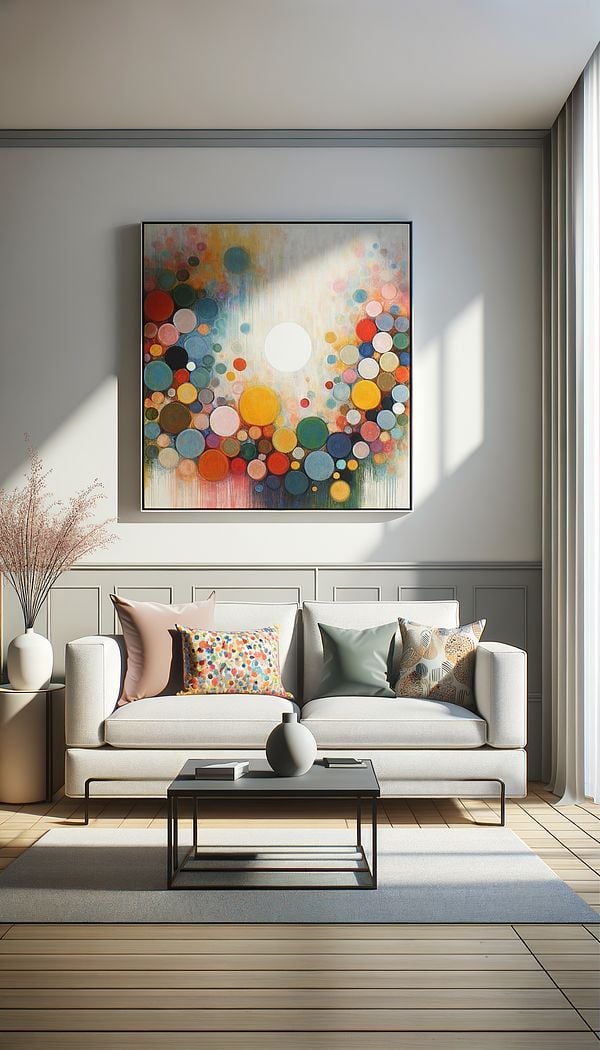What is Abstract?
Abstract in interior design refers to styles or elements that emphasize forms and colors over realistic representation.
Description
When we talk about abstract in the world of interior design, we're referring to a concept that celebrates shapes, colors, forms, and lines rather than trying to accurately depict real-life objects or scenes. This approach allows for creative expression and interpretation, both in art and design elements throughout a space.
Abstract design elements can be integrated into a variety of design styles, from the sleek and modern to the eclectic and whimsical. They often introduce a focal point of visual interest in a room, stimulating thought and conversation. Moreover, abstract designs can tie a room together, serving as the linchpin that harmonizes disparate elements.
Employing abstract elements in interior design can take many forms, from large, bold abstract art pieces hanging on the walls to subtler touches like abstractly patterned textiles or uniquely shaped furniture. This diversity in application makes abstract design a versatile tool in the designer's arsenal, allowing them to add depth, movement, and personality to a space.
Usage
In a modern living room, one might find an oversized abstract painting anchoring the space's visual interest, while in a contemporary bedroom, abstract-patterned throw pillows or an abstract-shaped lamp might serve as subtle nods to the theme. Designers also use abstract concepts in rugs, sculptures, and even in the architectural elements of a space, such as uniquely curved walls or asymmetrical windows.
FAQs
-
Can abstract design elements fit into any style of interior design?
Yes, abstract elements can be incorporated into almost any design style. Their versatility allows them to complement a wide range of aesthetic preferences, from traditional to contemporary.
-
How do I choose the right abstract art for my space?
Consider the color scheme, scale, and overall vibe of the room. Abstract art that echoes the room's colors or contrasts interestingly with them can tie your space together. Also, think about the emotional impact you want the art to have—do you want it to calm, inspire, or energize the viewer?
-
Are there other ways to incorporate abstract designs in a room besides art?
Absolutely! Aside from art, you can incorporate abstract designs through textiles (like rugs and pillows), furniture with unique shapes, decorative objects, and even architectural elements. It's all about embracing creativity and expression.
Practical Application
Start with a single abstract piece that speaks to you—be it art, a furniture piece, or a decorative object. Use this as your anchor or focal point, then consider incorporating smaller abstract touches throughout the room for cohesiveness. Pay attention to balance and proportion to ensure the abstract elements enhance rather than overwhelm the space.
-
Design Styles478 articles
-
Color & Patterns154 articles
-
Textiles & Upholstery252 articles
-
Decorative Objects240 articles
-
Art & Sculpture30 articles
-
Block PrintingBlock printing is a printing technique that uses carved wooden blocks to transfer designs onto fabric or paper.
-
ComforterA comforter is a thick, quilted, fluffy blanket designed to keep the user warm.
-
Louis XVILouis XVI refers to a French design style that emerged during the reign of King Louis XVI.
-
Fall FrontA fall front is a hinge-mounted panel typically found on desks or secretaire that folds down to provide a writing surface.
-
AdamesqueA style related to the designs of the Adam Brothers, characterized by neoclassical elements.
